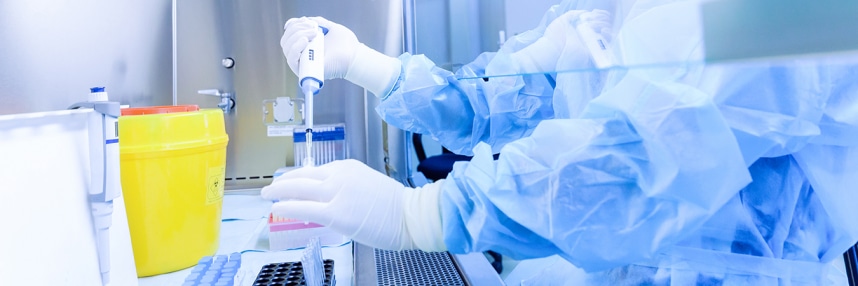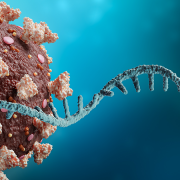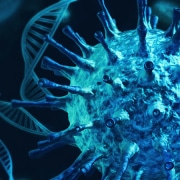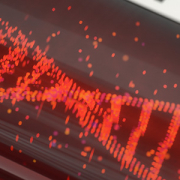Genomics: combating coronavirus
In the second of two articles focusing on the recent coronavirus outbreak, we explore how genomics is being put to use in diagnosis and treatment
The fact that the 2019-nCoV genome was sequenced so quickly and made available to researchers all over the world has enabled relatively rapid progress.
Scientists around the world are working to develop new tests and trial treatments, with genomics key to their armament.
Genomic testing
The US Food and Drug Administration (FDA) has issued emergency approval for a new rapid genomic test, which means samples can be tested at state laboratories rather than having to be sent to the Center for Disease Control and Prevention (CDC) for processing.
The genomic test being used to analyse patient samples – a real-time RT-PCR diagnostic panel test – takes just 4-6 hours to run.
This, and other similar tests work by firstly copying the virus RNA into DNA (using reverse transcriptase – the ‘RT’ in RT-PCR). This is then copied many times using an enzyme that builds DNA (this is the ‘PCR’: polymerase chain reaction). Next, small pieces of DNA called primers are added – these are designed by looking at the viral genome sequence and selecting sections that are unique to 2019-nCoV but are resistant to mutation, so will not vary between samples taken from different patients. The presence or absence of fluorescence indicates whether the sample contains 2019-nCoV.
The race to develop a vaccine
Less than two months after the first confirmed case of the virus, researchers are already working to create a vaccine.
The decoded virus genomes can offer researchers an understanding of the similarities and differences between the Wuhan coronavirus and previous viruses such as SARS and MERS.
The Coalition for Epidemic Preparedness Innovations (CEPI) in Oslo, Norway, is working on a vaccine which it hopes will be ready for clinical testing in 16 weeks, and for deployment in six to eight months. If they succeed this would represent a huge improvement over the timescales in previous epidemics: the first SARS vaccine did not enter clinical trials until 20 months after the genome was published.
“This is an extremely ambitious timeline and even if we are successful – and there can be no guarantee – there will be further challenges to navigate before we can make vaccines widely available,” said CEPI’s CEO, Dr Richard Hatchett.
Tapping into existing treatments
Understanding the virus’s genome has also helped investigators who are looking at whether any existing medications could benefit patients infected with 2019-nCoV. They do this by searching for similarities between the genomes of coronavirus and other viruses, and then trialling the use of medications that are effective in these other, similar viruses. Speed is the major advantage, both in that scientists get hold of this information more quickly and in faster treatment for patients.
A letter published in Nature reported the results of testing seven antiviral medications on in vitro samples of the Wuhan virus, and recommended two, remdesivir and chloroquine, for trials in coronavirus patients. These medicines have already been tested in humans and have already been shown to have an acceptable safety record.
Chloroquine is predominantly used as an anti-malarial drug; it is safe, inexpensive and widely available. Remdesivir was developed as a therapy for Ebola, and although not yet approved it has passed phase one and two clinical trials. It targets RNA-dependent RNA polymerase, a protein essential to replication in viruses with RNA-based genomes, such as coronaviruses, and which genomic analyses suggests is highly conserved in 2019-nCoV.
According to the New England Journal of Medicine, remdesivir was given to a US coronavirus patient with good results, and is now being trialled in China.
Other antiviral drugs, including several antivirals used in the treatment of HIV, have been suggested, based on in-vitro and machine-learning analyses. A combination of lopinavir and ritonavir has been trialled in a Chinese hospital.
–








